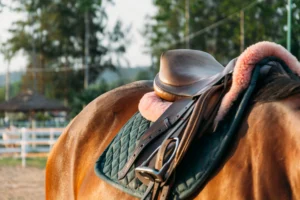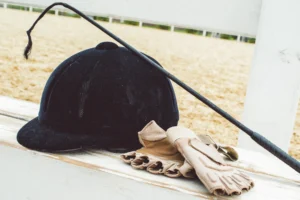Introduction
When discussing the world’s most distinctive equine breeds, the Arabian horse and Marwari Indian horse breeds often dominate the conversation. These magnificent creatures have captivated horse enthusiasts for centuries with their unique characteristics, rich histories, and cultural significance. While both are celebrated for their beauty and endurance, the Arabian horse and Marwari Indian horse breeds differ dramatically in several aspects that many equestrian enthusiasts overlook.
In this comprehensive guide, we’ll explore the five most striking differences between the Arabian horse and Marwari Indian horse breeds, delving into their origins, physical attributes, temperaments, and cultural impacts. Whether you’re a seasoned equestrian or simply fascinated by these majestic animals, understanding the distinctions between Arabian horse and Marwari Indian horse breeds will deepen your appreciation for these incredible equines.
A Brief History of Arabian and Marwari Indian Horse Breeds
Before diving into their differences, let’s establish a foundation of knowledge about these two remarkable horse breeds.
The Arabian Horse: Desert Royalty
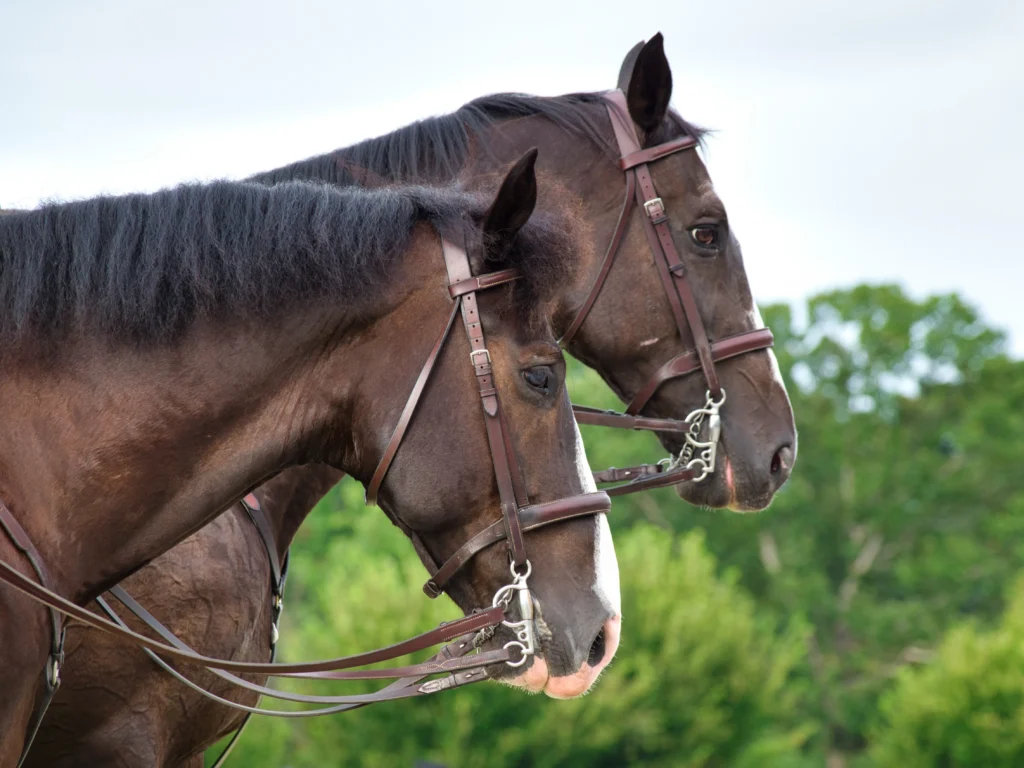
The Arabian horse stands as one of the oldest and most recognizable horse breeds in the world. Originating from the Arabian Peninsula, these horses have been bred for thousands of years by Bedouin tribes who valued them for their speed, endurance, and loyalty. Arabian horses were not just transportation but treasured family members who sometimes shared their owners’ tents, creating an unusually close bond between humans and horses.
The harsh desert environment shaped the Arabian horse into the resilient, hardy breed we know today. Their ability to travel long distances with minimal water and withstand extreme temperature fluctuations made them invaluable in their native lands. Arabian horses have influenced nearly every light horse breed worldwide, including Thoroughbreds, which speaks volumes about their genetic significance.
The Marwari: India’s Warrior Horse
The Marwari horse, one of the most distinctive Indian horse breeds, emerged from the Marwar region (present-day Rajasthan) in northwestern India. Developed primarily by the Rathore clan of Rajputs, these horses were bred specifically for warfare. The Marwari gained prominence between the 12th and 18th centuries when cavalry played a crucial role in Indian military strategy.
Marwari Indian horse breeds were selected for their courage, loyalty, and ability to thrive in the harsh desert conditions of Rajasthan—similar environmental pressures to those faced by Arabian horses, though in a different geographical context. Marwari horses became intrinsically tied to Rajput identity and were often considered divine beings, with legends telling of horses carrying wounded masters to safety or returning home alone to alert families when riders fell in battle.
Now that we’ve established some context about these remarkable breeds, let’s explore the five most significant differences between Arabian horse and Marwari Indian horse breeds that set them apart from each other and all other equines.
Difference #1: The Unmistakable Ears – Nature’s Unique Design
Perhaps the most immediately noticeable difference between Arabian horse and Marwari Indian horse breeds lies in their ears. This distinctive feature makes the Marwari instantly recognizable among all horse breeds globally.
Marwari’s Curved Inward Ears
The Marwari horse possesses what is arguably the most distinctive feature in the equine world: their ears curve inward and touch or overlap at the tips, creating a perfect arch when the horse is alert. This unique characteristic is so valued that it’s considered the defining feature of pure Marwari Indian horse breeds.
These curved ears aren’t just aesthetically unusual—they serve a practical purpose. The inward-curving shape acts as a funnel for sound, allowing Marwari horses exceptional directional hearing capabilities. In battle scenarios, this enhanced hearing gave riders a tactical advantage, as their mounts could detect approaching enemies from considerable distances.
Breeding standards for Marwari Indian horse breeds are strict regarding ear shape. Horses whose ears don’t curve properly or don’t meet at the tips are considered inferior specimens and traditionally weren’t used for breeding, though modern conservation efforts have sometimes relaxed these standards to maintain genetic diversity.
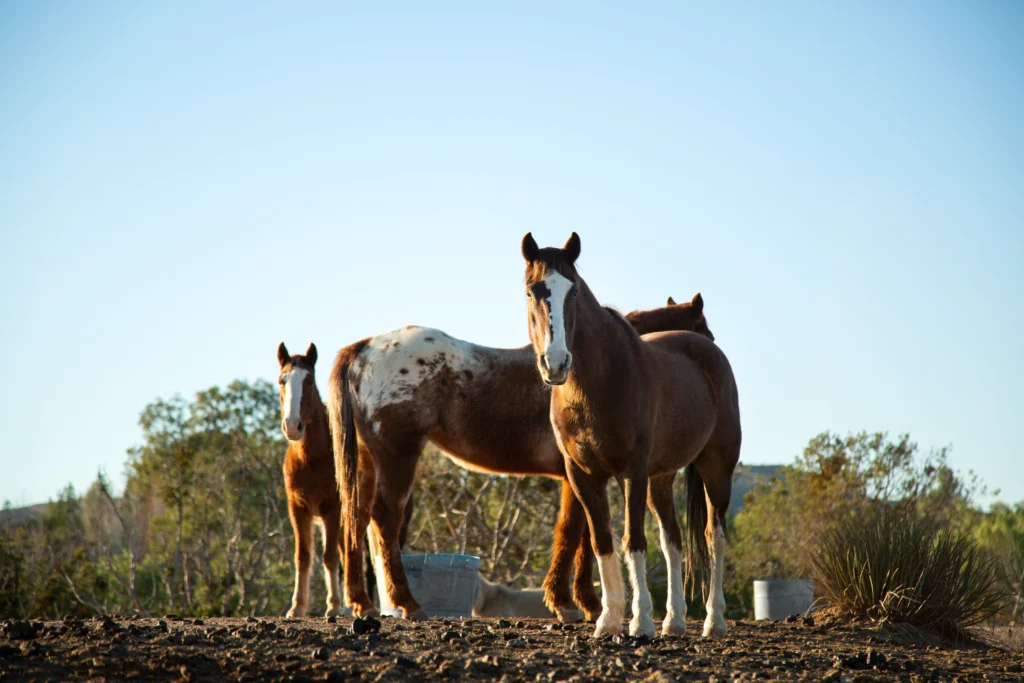
Arabian’s Refined, Alert Ears
By contrast, Arabian horses possess small, refined, and delicately shaped ears that contribute to their distinctive “dished” facial profile. While Arabian ears are set high and often curve slightly inward at the tips, they don’t connect like those of Marwari Indian horse breeds.
Arabian ears are extremely mobile and expressive, constantly moving to capture sounds, which reflects their alert, intelligent nature. This heightened awareness served them well in their desert homeland, where detecting predators early was essential for survival.
The difference in ear structure between Arabian horse and Marwari Indian horse breeds represents not just a cosmetic variation but an evolutionary adaptation to different environments and breeding priorities. While both developed in harsh desert conditions, the specific selective pressures created entirely different solutions to similar environmental challenges.
Difference #2: Body Structure and Movement – Built for Different Purposes
A close examination of the physical structure of Arabian horse and Marwari Indian horse breeds reveals profound differences in their conformation and movement patterns, reflecting their distinct evolutionary paths.
Arabian’s Refined Desert Elegance
The Arabian horse is renowned for its distinctive physical characteristics. Standing typically between 14.1 and 15.1 hands (57-61 inches) at the withers, Arabians have a compact, well-muscled body with a relatively short back and naturally high tail carriage. Their most recognizable feature is their distinctively dished face profile with large, expressive eyes and small muzzles.
Arabian horses possess several unique anatomical features that differentiate them from other breeds, including Marwari Indian horse breeds:
- Skeletal Structure: Arabians typically have one fewer vertebra, one fewer pair of ribs, and one fewer lumbar bone than other horse breeds, giving them their compact appearance.
- Movement Pattern: Arabians are known for their floating trot with natural elevation and extension, creating an impression of effortless movement.
- Endurance Physiology: Their large lung capacity, efficient heart, and dense bone structure allow them to excel at endurance activities.
These physical traits made Arabian horses perfectly suited for long-distance travel across desert terrain, where efficiency of movement conserved precious energy.
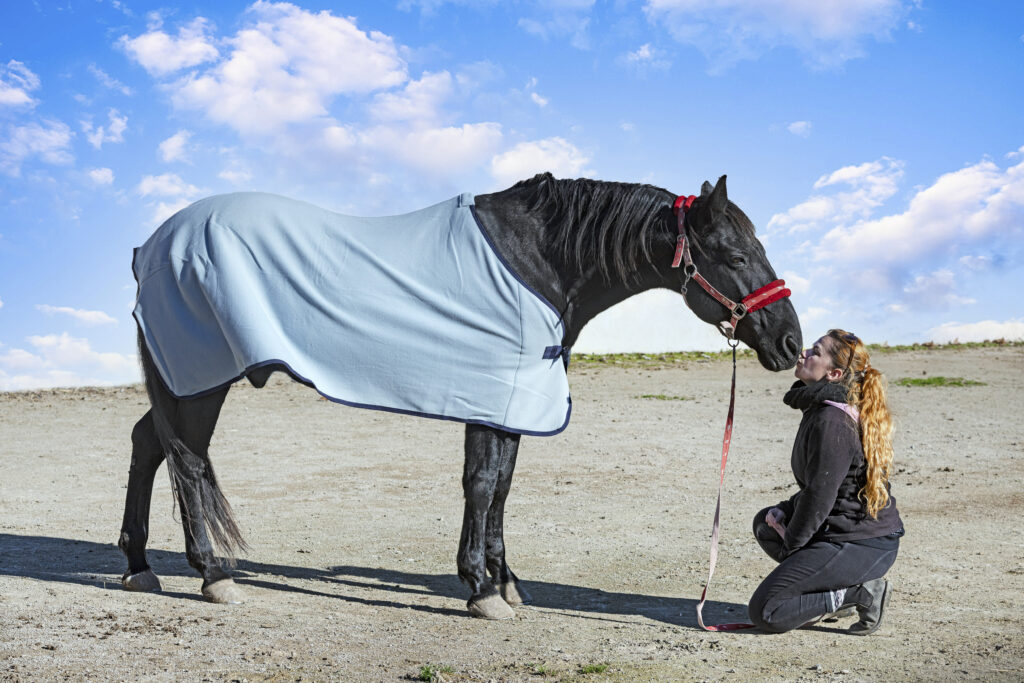
Marwari’s Powerful Warrior Build
In contrast, Marwari horses generally stand between 14.2 and 15.2 hands (58-62 inches), with a body structure distinctly different from Arabian horses. While both Arabian horse and Marwari Indian horse breeds evolved in harsh environments, the Marwari’s primary purpose as a war horse created different selective pressures.
Notable physical characteristics of Marwari Indian horse breeds include:
- Sturdy Frame: Marwaris have a more substantial build with powerful shoulders and quarters, suitable for carrying armored riders.
- Unique Gait: Many Marwari horses naturally perform the “revaal,” a four-beat lateral gait similar to the running walk, which provides a smooth ride over long distances.
- Resilient Hooves: Their hard, medium-sized hooves are remarkably resistant to cracking, even on rocky terrain—a crucial advantage for war horses.
The revaal gait of Marwari Indian horse breeds deserves special mention, as it differs significantly from the movement patterns of Arabian horses. This comfortable gait allowed Rajput warriors to travel long distances without fatigue, then arrive ready for battle. While Arabian horses excel in endurance events with their efficient trot, the Marwari’s revaal represents an entirely different evolutionary solution to the challenge of desert travel.
The structural differences between Arabian horse and Marwari Indian horse breeds directly reflect their historical uses: the Arabian as a mount for long-distance desert travel and the Marwari as a battle-ready war horse capable of performing precise maneuvers in combat.
Difference #3: Genetic Heritage and Global Influence – Divergent Paths
The genetic histories of Arabian horse and Marwari Indian horse breeds have followed remarkably different trajectories, resulting in vastly different global influences and modern situations.
Arabian: The World’s Influential Bloodline
The Arabian horse stands as perhaps the most influential breed in equine history. Their genetic material has contributed to nearly every modern light horse breed, including Thoroughbreds, Quarter Horses, and even many warmblood sport horses. This widespread influence occurred through deliberate crossbreeding programs worldwide, particularly in Europe during the 17th and 18th centuries.
Key aspects of the Arabian’s genetic influence include:
- Pure Bloodlines: Arabian horses maintain one of the oldest pure breeding programs in the world, with documented pedigrees tracing back hundreds of years.
- Global Distribution: Arabian horses can be found in significant numbers across every continent, with especially strong populations in the United States, Middle East, and Europe.
- Genetic Testing: Modern Arabian horses have been extensively studied genetically, revealing several unique genetic markers specific to the breed.
The Arabian Horse Registry, established in 1908 in the United States, maintains strict standards for registration, ensuring the continued purity of Arabian horse bloodlines while accommodating global breeding operations.
Marwari: A Threatened National Treasure
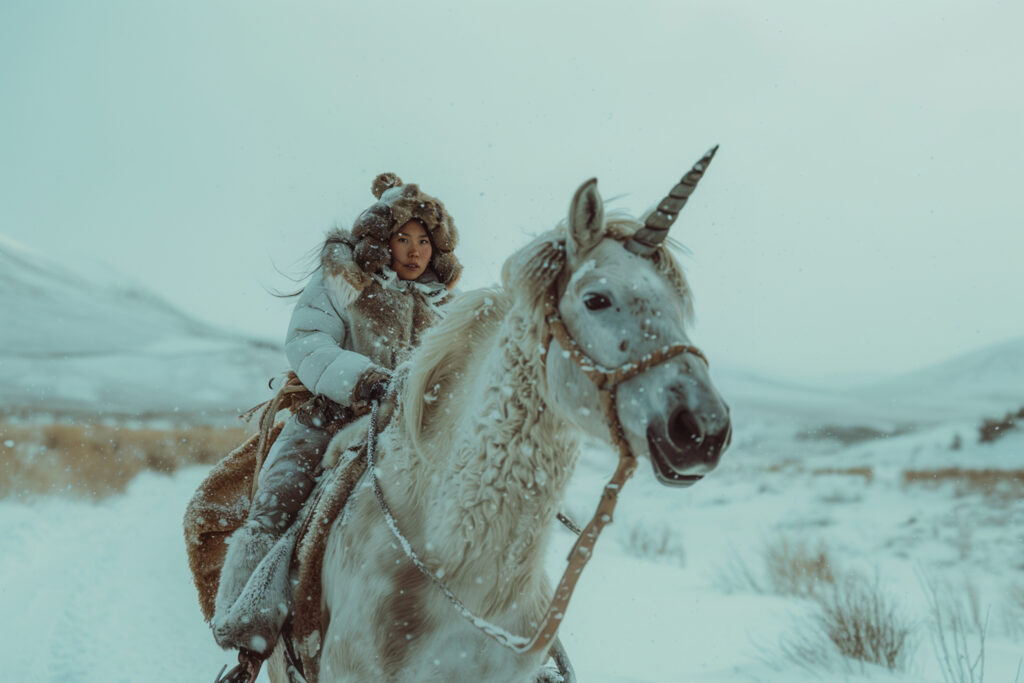
In stark contrast to the Arabian’s global dissemination, Marwari Indian horse breeds followed a much more isolated genetic path. For centuries, Marwari horses rarely left India, with exports strictly controlled or outright banned during various historical periods. This isolation preserved their unique characteristics but limited their global influence.
Important facts about Marwari genetics include:
- Near Extinction: During the British colonial period, many Marwari Indian horse breeds were crossbred with Thoroughbreds and other European breeds, nearly causing the extinction of pure Marwari bloodlines.
- Late Registration: The first studbook for Marwari horses wasn’t established until 1995, making formal breeding programs relatively recent compared to Arabians.
- Export Restrictions: Until 2000, Marwari horses couldn’t legally leave India, and even today, exports remain tightly controlled.
Current estimates suggest fewer than 10,000 pure Marwari horses exist worldwide, with the vast majority in India. Conservation efforts led by organizations like the Indigenous Horse Society of India work to preserve this unique genetic heritage.
The difference in genetic dissemination between Arabian horse and Marwari Indian horse breeds represents one of the most significant contrasts between these two ancient breeds. While Arabian genetics flow through millions of horses worldwide, the Marwari remains a rare, protected treasure primarily within its homeland.
Difference #4: Color Patterns and Markings – Nature’s Canvas
The coloration and distinctive markings of Arabian horse and Marwari Indian horse breeds reveal another fascinating area of difference between these two magnificent equines.
Arabian’s Classic Colors
Arabian horses typically display a relatively limited but consistent color range. The Arabian Horse Association recognizes five main coat colors:
- Bay: Reddish-brown body with black mane, tail, and lower legs
- Grey: Born dark and gradually lightening with age
- Chestnut: Varying shades of red-brown with matching or lighter mane and tail
- Black: True black, though relatively rare in purebred Arabians
- Roan: Uncommon but recognized, featuring white hairs intermixed with base color
While Arabians may display common white markings on the face and legs, they rarely exhibit pinto or appaloosa patterns. The breed is known for its gleaming coat that often appears to shimmer in sunlight—a characteristic that sets Arabian horse apart from many other breeds, including Marwari Indian horse breeds.
Marwari’s Diverse Palette
Marwari Indian horse breeds, by contrast, showcase a much broader spectrum of colors and patterns, including several distinctive variations rarely seen in other breeds:
- Traditional Colors: Bay, gray, chestnut, and black (similar to Arabians)
- Piebald and Skewbald: Black-and-white or colored-and-white pinto patterns
- Nukra: A unique cream-gold color with metallic sheen specific to Indian horse breeds
- Albino: Not genetically true albinos but extremely light-colored horses with pink skin
Perhaps most distinctive is the prevalence of the rare “pie-bald” pattern in Marwari horses—a stark black-and-white patterning that was historically preferred by Rajput nobles for its dramatic appearance in processions and battles. This pattern is uncommon in Arabian horses.
Another unique aspect of Marwari Indian horse breeds is the cultural significance assigned to specific markings. Traditional breeders examine natural whorls in the coat (called “chakras”) to determine a horse’s character and suitability. Certain marking patterns are considered highly auspicious, while others might be seen as inauspicious—a cultural dimension not present in Arabian horse breeding traditions.
The broader color diversity in Marwari Indian horse breeds compared to the more standardized appearance of Arabian horses reflects their different breeding histories. While Arabian horses were bred with greater emphasis on performance characteristics and conformity to type, Marwari breeding incorporated aesthetic and cultural preferences alongside functional traits.
Difference #5: Cultural Significance and Modern Roles – From Ancient Times to Today
Perhaps the most profound difference between Arabian horse and Marwari Indian horse breeds lies in their cultural contexts and modern roles in society, reflecting their divergent histories and the values of the cultures that shaped them.
Arabian: Global Ambassador and Athletic Competitor
The Arabian horse transitioned remarkably successfully from its traditional desert role to modern equestrian contexts. Today, Arabian horses excel in multiple disciplines including:
- Endurance Racing: Dominating international competitions, including the prestigious Tevis Cup
- Show Rings: Competing in specialized Arabian horse shows that judge conformity to breed standards
- Sport Disciplines: Participating successfully in dressage, show jumping, and eventing
- Family Horses: Serving as beloved companions and riding horses for enthusiasts worldwide
Culturally, the Arabian horse has become a global symbol of equine beauty and refinement. Annual Arabian horse shows attract thousands of participants and spectators in countries far from the breed’s desert origins. With an estimated global population exceeding one million purebred Arabians, these horses enjoy extensive institutional support through international registries, specialized veterinary research, and dedicated breeding programs.
The transition of Arabian horse from desert warrior to global equestrian icon represents one of the most successful adaptations of any horse breed to the modern world.
Marwari: Cultural Revival and National Identity
The journey of Marwari Indian horse breeds through history followed a dramatically different path. After near extinction during the colonial period and early independence years, these horses are experiencing a cultural renaissance tied to Indian national identity.
Modern roles of Marwari horses include:
- Ceremonial Importance: Featured prominently in traditional Rajasthani weddings and religious festivals
- Cultural Heritage: Promoted as living symbols of India’s martial history and aristocratic traditions
- Tourism: Attracting visitors to Rajasthan through specialized riding safaris and cultural exhibitions
- Limited Sport Use: Participating in emerging Indian equestrian competitions, though less extensively than Arabians internationally
Unlike Arabian horses, Marwari Indian horse breeds remain closely tied to their geographical origins. Organizations like the Indigenous Horse Society of India and the Marwari Horse Society work to preserve not just the breed’s genetics but the cultural practices and traditional horsemanship associated with them.
A significant modern challenge for Marwari Indian horse breeds involves finding relevant roles in contemporary Indian society while preserving their unique characteristics. Recent initiatives include developing sustainable tourism opportunities that showcase these horses in their traditional homeland while providing economic incentives for breeding and conservation.
The contrast between the global success of Arabian horses and the localized cultural revival of Marwari Indian horse breeds highlights how differently these ancient breeds have navigated the transition to the modern world.
Care and Management: Different Needs for Different Breeds
Understanding the distinct requirements for proper care and management of Arabian horse and Marwari Indian horse breeds is essential for anyone considering owning these magnificent animals.
Arabian Horse Care Essentials
Arabian horses, despite their desert heritage, have adapted to diverse climates worldwide. Their care typically involves:
- Diet: Arabians often have efficient metabolisms requiring careful nutrition management to prevent weight gain.
- Exercise: These energetic horses benefit from regular exercise regimens that challenge their intelligence and athletic abilities.
- Health Considerations: Arabians may have higher susceptibility to certain genetic conditions like Severe Combined Immunodeficiency Disorder (SCID), requiring responsible breeding practices.
- Training Approaches: Their intelligent, sensitive nature responds best to positive reinforcement methods rather than force.
The extensive global infrastructure supporting Arabian horse ownership makes finding specialized veterinarians, trainers, and equipment relatively straightforward in most developed countries.
Marwari Horse Management Practices
Caring for Marwari Indian horse breeds often requires more specialized knowledge:
- Climate Adaptation: Although highly adaptable, Marwaris thrive best in hot, dry climates similar to their native Rajasthan.
- Traditional Diet: Many Marwari horses are traditionally maintained on diets incorporating regional ingredients like jaggery (unrefined cane sugar) and specific herbs believed to enhance health.
- Training Philosophy: Traditional training methods for Marwari Indian horse breeds emphasize developing the natural “revaal” gait and building the horse’s courage.
- Specialized Equipment: Authentic Marwari tack differs significantly from Western or English equipment, including distinctive bridles and saddles designed for their conformation.
Outside India, finding appropriate expertise and equipment for Marwari horses presents a greater challenge than for the more globally established Arabian breed. This practical consideration represents another significant difference between ownership experiences of Arabian horse and Marwari Indian horse breeds.
Choosing Between Arabian and Marwari: Which is Right for You?
For the equestrian enthusiast considering either of these magnificent breeds, understanding their distinctive characteristics can help inform a suitable choice. Both Arabian horse and Marwari Indian horse breeds offer unique advantages depending on your goals, experience, and circumstances.
When an Arabian Might Be Ideal
Consider an Arabian horse if you:
- Live Outside India: With their global presence, Arabian horses are more readily available worldwide.
- Participate in Endurance Sports: Their unmatched stamina makes them ideal for long-distance riding competitions.
- Value Extensive Breed Support: The extensive network of Arabian trainers, veterinarians, and educational resources provides substantial support for owners.
- Prefer a Well-Documented Breed: With centuries of meticulous breeding records, Arabian lineages are extensively documented.
For many Western riders, the Arabian horse represents a more practical choice while still offering a connection to ancient equestrian heritage.
When a Marwari Might Be Perfect
Consider a Marwari horse if you:
- Have Access to India: The limited exportation of Marwari Indian horse breeds means most ownership opportunities exist within India.
- Value Cultural Connection: Owning a Marwari creates a direct link to centuries of Indian equestrian tradition.
- Appreciate Rarity: The relatively small population of pure Marwari horses makes them truly special companions.
- Enjoy Education: Marwari ownership often involves learning traditional Indian horsemanship techniques and cultural practices.
For those with connections to India or deep interest in preserving endangered breeds, Marwari Indian horse breeds offer a meaningful relationship with living history.
Research and Conservation Efforts
Both Arabian horse and Marwari Indian horse breeds benefit from dedicated research and conservation initiatives, though these efforts follow different paths reflecting each breed’s unique situation.
Arabian Horse Research
With their global popularity, Arabian horses have benefited from extensive scientific research:
- Genetic Studies: Multiple universities maintain Arabian-specific research programs identifying genetic markers and hereditary conditions.
- Performance Enhancement: Research into optimal training techniques and nutrition specifically for Arabian physiology.
- Disease Resistance: Studies examining the notable hardiness of Arabian horses against certain equine diseases.
The World Arabian Horse Organization coordinates many international research efforts, ensuring findings benefit the breed worldwide.
Marwari Conservation Initiatives
As a rare breed with limited numbers, Marwari Indian horse breeds focus heavily on conservation:
- Genetic Documentation: Ongoing projects to document remaining pure bloodlines and create comprehensive genetic databases.
- Cultural Preservation: Efforts to record traditional training methods and uses of Marwari horses in Indian culture.
- Breeding Incentives: Government programs providing financial support for maintaining pure Marwari breeding stock.
Organizations like Indigenous Horse Society of India lead conservation efforts, working to ensure these unique horses survive for future generations.
The difference in research focus—performance enhancement for globally numerous Arabians versus preservation for the rare Marwari—highlights again the divergent situations of these two ancient breeds.
Conclusion: Celebrating Arabian and Marwari Heritage
The pronounced differences between Arabian horse and Marwari Indian horse breeds underscore the fascinating diversity within the equine world. From the Marwari’s distinctive curved ears to the Arabian’s refined dish-faced profile, these breeds represent the culmination of centuries of selective breeding shaped by cultural values, environmental pressures, and human purposes.
While Arabian horses have achieved unprecedented global success, becoming ambassadors of equine beauty and performance worldwide, Marwari Indian horse breeds remain closely tied to their cultural origins—rarer but no less magnificent. Both breeds deserve appreciation not just as beautiful animals but as living embodiments of human history and our ancient partnership with horses.
Whether you’re drawn to the Arabian’s global legacy or the Marwari’s unique cultural significance, understanding the differences between these remarkable breeds enhances appreciation for the incredible diversity of the equine world. Arabian horse and Marwari Indian horse breeds stand as testaments to how different human cultures have shaped their equine partners according to their needs, values, and environments.
For those fortunate enough to encounter either of these magnificent breeds, the experience connects us not just to these remarkable animals but to the centuries of human history they represent. In celebrating both Arabian horse and Marwari Indian horse breeds, we honor the enduring bond between humans and horses that has shaped civilizations since time immemorial.
References and Further Reading
For those interested in learning more about Arabian horse and Marwari Indian horse breeds, these trusted sources provide valuable information:
- The Arabian Horse Association. (2023). Breed Characteristics and Standards
- Indigenous Horse Society of India. (2024). Conservation Status of Native Indian Horse Breeds
- Al Ain, F., & Singh, R. (2022). Comparative Study of Desert-Adapted Horse Breeds. Journal of Equine Veterinary Science, 45(3), 78-92.
- Hendricks, B. L. (2007). International Encyclopedia of Horse Breeds. University of Oklahoma Press.
- Marwari Horse Society. (2023). Official Breed Standards and History
- World Arabian Horse Organization. (2024). Global Arabian Horse Population Report
- Singh, P., & Johar, K. S. (2021). Traditional Horsemanship Practices of Rajasthan. New Delhi: Oxford University Press.
- PetsPump Guide to Exotic Horse Breeds
- American Museum of Natural History. (2022). The Horse: Evolution and Cultural Impact Exhibition
- International Federation for Equestrian Sports. (2024). Breed Performance Statistics
This article about Arabian horse and Marwari Indian horse breeds was last updated on May 5, 2025, with the latest information available on these magnificent equines.



